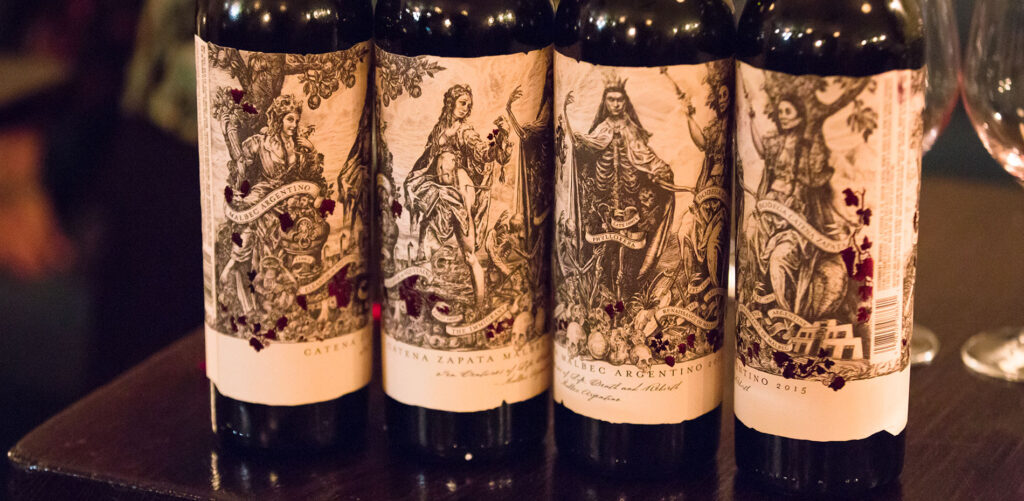Grape Escape: Argentina

Malbec – inky pink, purple wine with deep chocolate and fruit aromatics. A wine that can be made cheaply for a box or jug or with exquisite care. I honestly believe that Malbec may be the most misunderstood grape. Argentina’s history of making cheap, jug wine due to economic factors haunts them to this day.
Factoids
- Argentines consume 12 gallons of wine per resident per year.
- The 5th largest producer of wine in the world.
- They consume 90% of their own wine.
- Mendoza, the main growing area in Argentina, is 72 times larger than Napa Valley, about a third of the size of the state of California.

The spooky label above comes from Catena Zapata’s Argentino – a 100% Malbec made in the San Rafael district in the center of Mendoza. The wine is the finest made by Catena Zapata and it pays homage to the history of the Malbec grape.
The Story Behind the Label
Eleanor of Aquitaine represents the birth of Malbec. She is a strong, Old-World presence, lingering at the bridge in Cahors, where Malbec came into its own. Next, the Immigrant symbolizes the movement to the New World and the unknown explorers and adventurers who connected Europe with the Americas. Phylloxera personifies the death of Malbec in the Old World, which enabled its rebirth in the new. Finally, there is Bodega Catena Zapata, represented by Adrianna Catena, who depicts birth, earth, and motherhood, sharing the riches of the New World. Today, the Catena family’s fourth generation leads the high-altitude renaissance in Argentina.
Origin Story
Argentina was a Spanish discovery in the 6th century leading to vines being planted there in 1577. Everywhere the Spanish went, the Catholic Church went, and thus vines for communion. Malbec didn’t make its way there until Argentina declared their independence from Spain in 1816. Argentina encouraged French immigration as an independent nation. The incoming French brought grape vines from home, like Cabernet Sauvignon and Malbec.
Phylloxera
Phylloxera, the small louse that eats the roots of grape vines, invaded France in 1860. This louse attacks the roots of vines, destroying vineyards within a few years. French winemakers fled France, many to Argentina. These winemakers were happy to find French varietals thriving in South America where phylloxera never thrived. It hates sandy soils, which abound in Argentina.
Instability is Always Bad for Wine
Argentina was politically and economically unstable during the late 1970s through the 1990s. This instability made quality winemaking unprofitable. Farmers struggling to make ends meet ripped out lower yielding vines despite the quality wines they produced. Vineyards were replanted to food crops or replaced with high producing, low-quality vines. In 1989 inflation hit 12,000% (that is NOT a typo). The only way to scrape by was to make lots of wine. The survival of vineyards hinged on Argentina producing as much jug wine as possible.
More Change for Argentina
Significant reforms by the Argentine government in the 1990s led to a revamped banking system and a more stable currency. Although the economy still ebbs and flows, the federal government has encouraged the growth of viticulture. Even the devaluation of the Argentine peso in 2002 helped wineries, allowing them to lower production costs while already on the road to increasing quality.
Time to Drink?
Argentina is the 5th largest producer of wine in the world; even so, they consume 90% of their own production! Here are some gems that have slipped out for us to enjoy.








